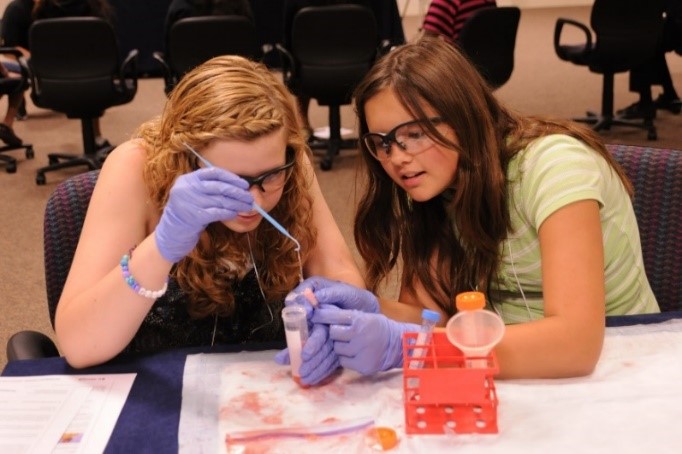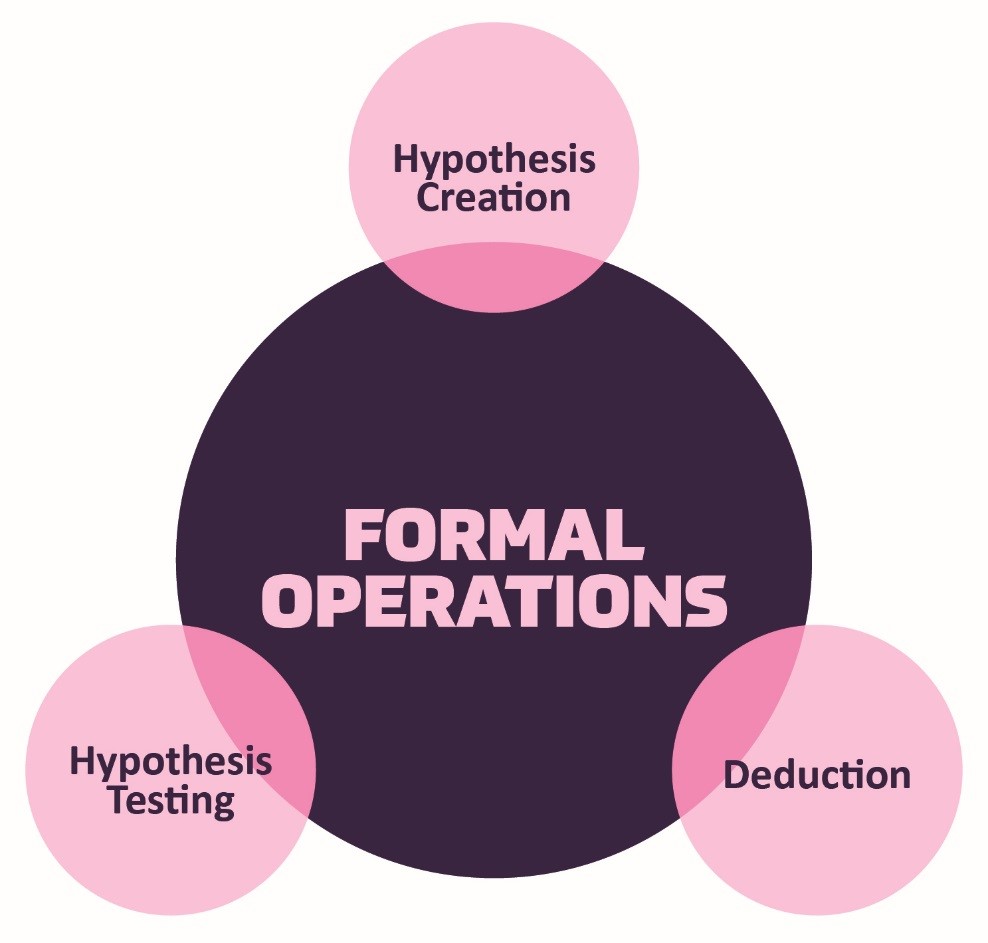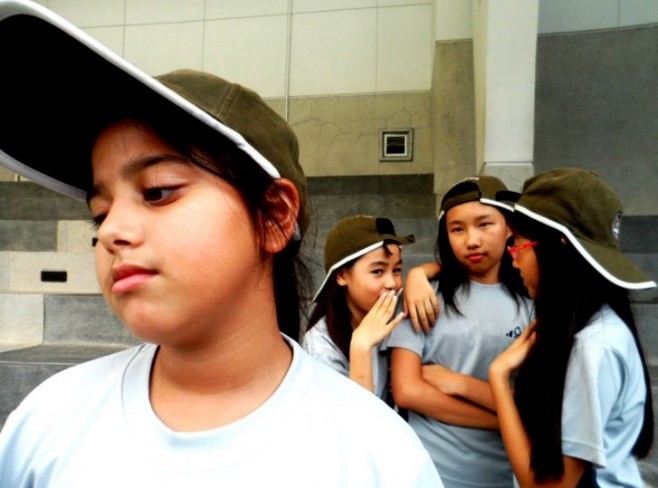10.4: Piaget formal operational stage
- Page ID
- 180268
During the formal operational stage, adolescents are able to understand abstract principles. They are no longer limited by what can be directly seen or heard, and are able to contemplate such constructs as beauty, love, freedom, and morality. Additionally, while younger children solve problems through trial and error, adolescents demonstrate hypothetical-deductive reasoning, which is developing hypotheses based on what might logically occur. They are able to think about all the possibilities in a situation beforehand, and then test them systematically, (Crain, 2005) because they are able to engage in true scientific thinking.


Does everyone reach formal operations?
According to Piaget, most people attain some degree of formal operational thinking, but use formal operations primarily in the areas of their strongest interest (Crain, 2005). In fact, most adults do not regularly demonstrate formal operational thought. A possible explanation is that an individual’s thinking has not been sufficiently challenged to demonstrate formal operational thought in all areas.
Adolescent Egocentrism
Once adolescents can understand abstract thoughts, they enter a world of hypothetical possibilities and demonstrate egocentrism, a heightened self-focus. The egocentricity comes from attributing unlimited power to their own thoughts (Crain, 2005). Piaget believed it was not until adolescents took on adult roles that they would be able to learn the limits to their own thoughts.
David Elkind: On Piaget’s Theory
David Elkind (1967) expanded on the concept of Piaget’s adolescent egocentricity. Elkind theorized that the physiological changes that occur during adolescence result in adolescents being primarily concerned with themselves. Additionally, since adolescents fail to differentiate between what others are thinking and their own thoughts, they believe that others are just as fascinated with their behavior and appearance. This belief results in the adolescent anticipating the reactions of others, and consequently constructing an imaginary audience. The imaginary audience is the adolescent’s belief that those around them are as concerned and focused on their appearance as they themselves are (Schwartz, Maynard, & Uzelac, 2008, p. 441). Elkind thought that the imaginary audience contributed to the self-consciousness that occurs during early adolescence. The desire for privacy and the reluctance to share personal information may be a further reaction to feeling under constant observation by others.

Another important consequence of adolescent egocentrism is the personal fable or belief that one is unique, special, and invulnerable to harm. Elkind (1967) explains that because adolescents feel so important to others (imaginary audience) they regard themselves and their feelings as being special and unique. Adolescents believe that only they have experienced strong and diverse emotions, and therefore others could never understand how they feel. This uniqueness in one’s emotional experiences reinforces the adolescent’s belief of invulnerability, especially to death. Adolescents will engage in risky behaviors, such as drinking and driving or unprotected sex, and feel they will not suffer any negative consequences. Elkind believed that adolescent egocentricity emerged in early adolescence and declined in middle adolescence, however, recent research has also identified egocentricity in late adolescence (Schwartz, et al., 2008).
Consequences of Formal Operational Thought
As adolescents are now able to think abstractly and hypothetically, they exhibit many new ways of reflecting on information (Dolgin, 2011). For example, they demonstrate greater introspection or thinking about one’s thoughts and feelings. They begin to imagine how the world could be, which leads them to become idealistic or insisting upon high standards of behavior. Because of their idealism, they may become critical of others, especially adults in their life. Additionally, adolescents can demonstrate hypocrisy, or pretend to be what they are not. Since they are able to recognize what others expect of them, they will conform to those expectations for their emotions and behavior seemingly hypocritical to themselves. Lastly, adolescents can exhibit pseudostupidity, which is when they approach problems at a level that is too complex and they fail because the tasks are too simple. Their new ability to consider alternatives is not completely under control and they appear “stupid” when they are in fact bright, just inexperienced.[4]
Attributions:
Child Growth and Development by Jennifer Paris, Antoinette Ricardo, and Dawn Rymond, 2019, is licensed under CC BY 4.0
[1] Image by the U.S. Army CCDC is licensed under CC BY 2.0
[2] Image by Ian Joslin is licensed under CC BY 4.0.
[3] Image by Twentyfour Students is licensed under CC BY-SA 2.0
[4] Lifespan Development: A Psychological Perspective by Martha Lally and Suzanne Valentine-French is licensed under CC BY-NC-SA 3.0

